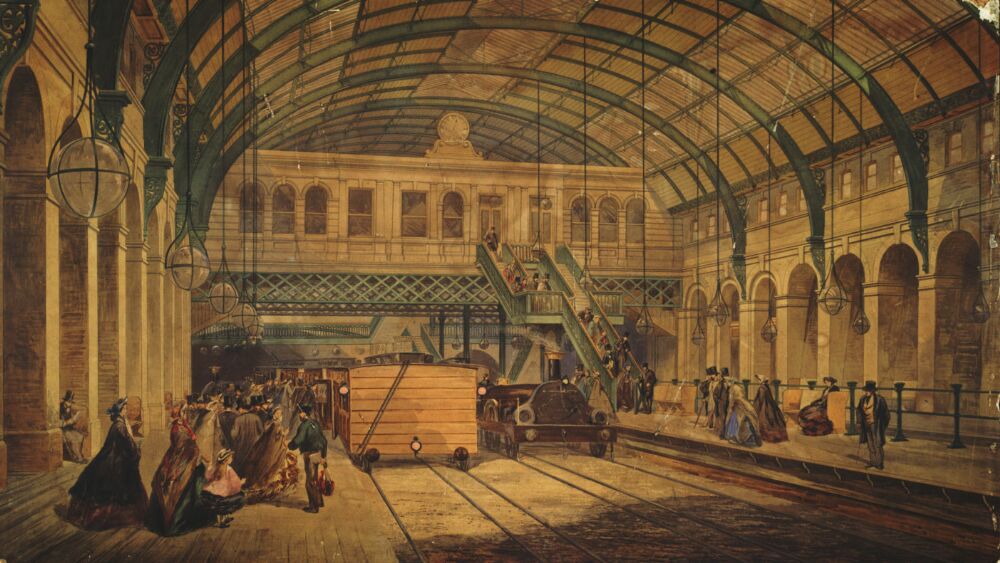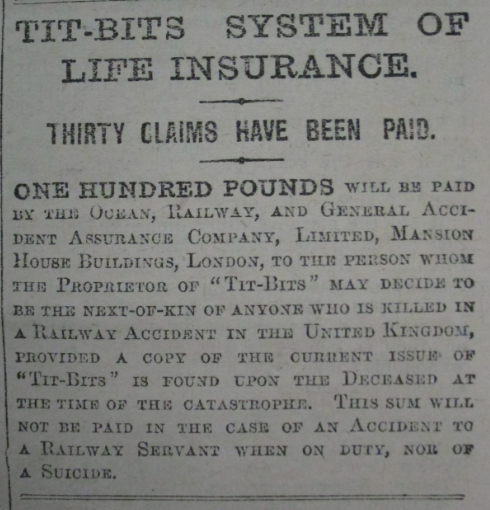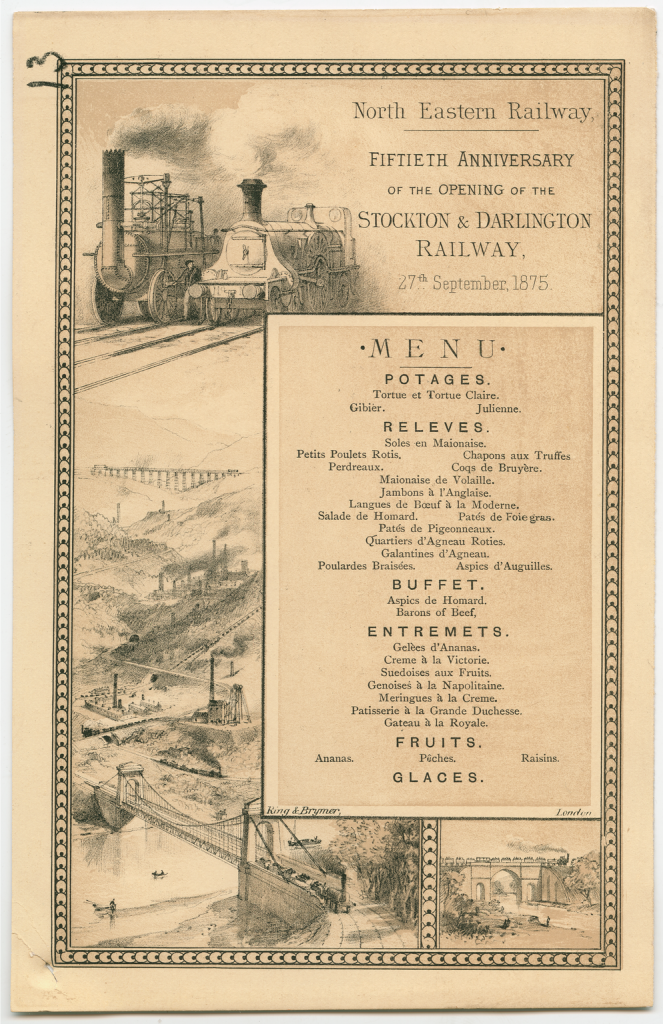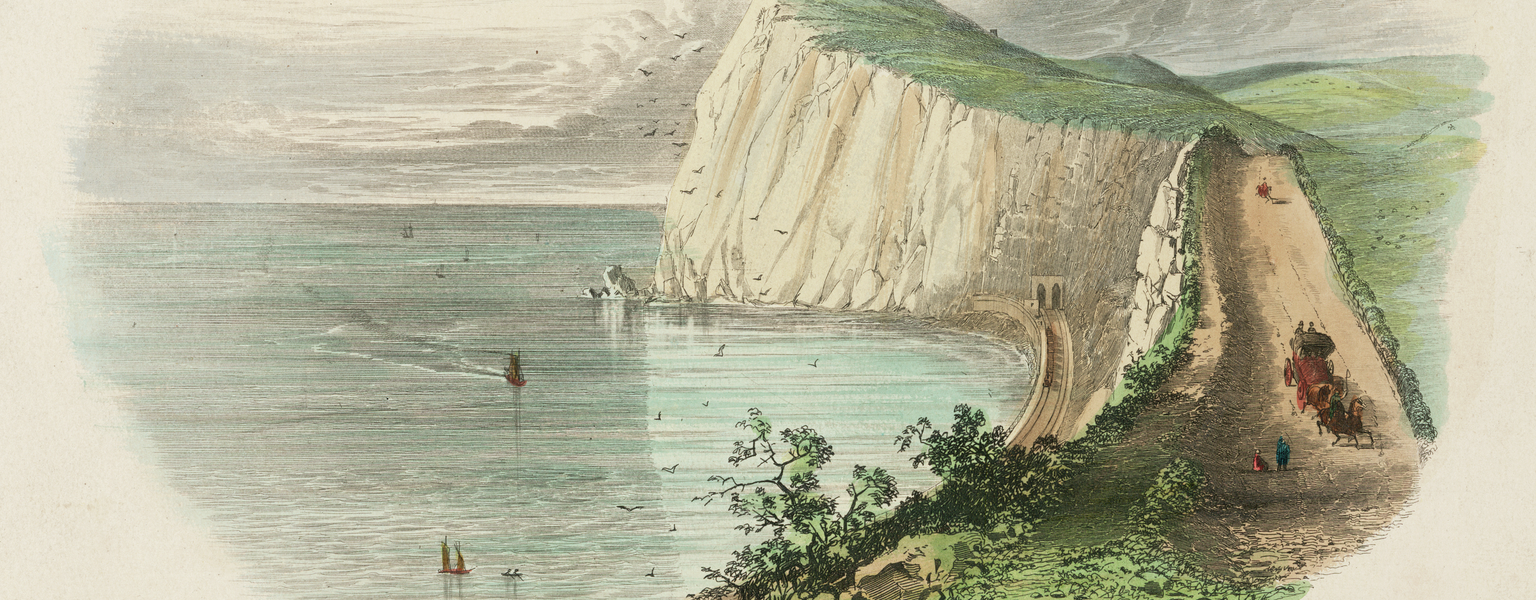The Institute of Railway Studies, a joint collaboration between the National Railway Museum and the University of York, regularly put on free public seminars showcasing new and diverse research topics. One of our regular attendees, Jonathan Wray, has very kindly produced these interesting summaries of the seminars from the last couple of years. If you would like to be updated on future seminars, sign up to our Archives and Behind the Scenes newsletter.
November 2018
The first talk was given by Dr Nicola Kirkby of Kings College, London, entitled The Channel Railway: Reverberations of a Fictional Line in Dickens and Hardy. Dr Kirkby explored the feelings of Victorian travellers to railways and rail travel as opposed to its actual reality. To achieve this Dr Kirkby compared Dickens’ A Flight published in 1851 with Hardy’s A Laodicean, published in 1880-81.
Both works reflect arguments expressed in the Channel Railway debates of the 1880s about the need to create a physical cross-channel connection. There was much discussion about how the philosophies of British and French railways—the former private- and the latter state-run—would actually operate a combined “Channel Railway” including the different infrastructure engineering traditions. The proposed railway might also be a route for invasion!
Dickens’ A Flight reflects a journey he took to Paris via the South Eastern Railway. He makes it clear he does not feel comfortable on the journey or in control of his surroundings. As such, he reflects much of the national view at the time, especially regarding links to Europe.
Hardy on the other hand exploits his ability to describe the natural environment. He explores differences between those who built the railway and those who operate it. Additionally he shows how the railway can be built without disrupting the landscape in his novel, subtitled “a novel of today”.

The second talk was by Richard Dennis, Professor Emeritus of the Geography Dept., University College, London, and entitled Fearful Commuting: Sources of Anxiety on the London Underground 1863-1905. Prof Dennis’s interest lies in what he calls “architectures of hurry”. Life in Victorian Britain was speeding up, not just technologically but also psychologically and emotionally, involving risk-taking and assessment of risk. Some commentators were ambivalent about “improvements” to railway technology, such as block signalling or continuous braking, as they worried that train crews would be less responsible and concentrate less.
Prof Dennis’s research is looking at train accident reports from the Board of Trade (BoT) and the accident reports of the railway companies, mainly those of the Metropolitan railway, together the large volume of digitised contemporary newspaper reports. Board of Trade figures showed there were 50 collisions, 13 derailments, nine trains hitting buffers and two runaway trains on the Central London lines of the Metropolitan and District Railways prior to 1905 when the lines were electrified.
Most were minor accidents involving trains travelling at about 5mph. Some reflected attitudes of “keeping the show on the road” e.g. drivers with broken or bent coupling rods simply carried on with out them under reduced power, an attitude that would not be tolerated today. The reports also show the large number of trains running that meant signalmen had little time to relax. Many of the accidents would not happen today due to current railway technology.
In the early 1880s, there was a Fenian bombing campaign in London. Three bombs went off in the Underground. None caused serious damage and there were no fatalities. Officialdom came to the conclusion that the bombers had intended to throw the bombs out of the train and for the bombs to explode in the tunnel after the trains had passed, despite the fact that one bomb had exploded between two passing trains causing minor damage to both. The press thought differently, however, in one case portraying “The Dynamite Fiend” towering over a collapsed London and in another portraying this as an attack on the British working man going to and from his work.
Then, as now, the Underground was a soft target, difficult to secure and dependent on the vigilance of both staff and passengers. It was also generally not the safest of environments and it was fortunate that so few of the many derailments, collisions, signalling mistakes and myriad other accidents and incidents led to so few fatalities.
However entrepreneurship was not far away. During questions, a member of the audience caused much amusement when he told of a form of travel insurance for passengers. Apparently any passenger who died whilst travelling on the Underground, and who was found with a copy of “Titbits” magazine on their body, would have their funeral costs paid for by the publishers!

I am grateful to Dr Kirkby and Professor Dennis for their help in preparing this article.
July 2017
The afternoon started with a talk by Sophie Vohra. Sophie’s wider PhD research is about commemorative cultures of the railways in Britain. The paper she gave in the seminar was part of this and focussed on comparing the celebrations, in 1875, 1925 and 1975, of the opening of the Stockton & Darlington Railway in 1825. All three events aimed to show locomotive development through different commemorative practises such as cavalcades, exhibitions and material culture amongst other things, though there were different underlying motivations as to why they were each held.

1875 saw the North Eastern Railway take the lead and it concentrated on key business partners, MPs, local and national government. At a time when railways were not universally popular, less privileged communities showed some dissent. In 1925 the LNER was at the helm of much grander proceedings in association with the International Railway Congress that was held in Britain that year. Parallel to the main events were local events and notably, following pressure from the railway unions, was a “workers” event. As the anniversary fell on a Sunday, that enabled LNER staff to attend. At the time of falling rail travel the aim was to raise awareness of Britain’s railways, both home and abroad.
1975 saw a nationalised British Railways organise events together with local government and special interest groups. Twentieth-century communications ensured that people far and wide knew of the celebrations, the memory of which was enhanced by a range of commemorative artefacts. (How many of us still have the postage stamps?) However the main message was to project the story of the past to stabilise the modern railway image.

After coffee, Dr David Turner, from the University of York, spoke about the railways’ handling of beer prior to 1914. His research looked at this from the customer’s point of view. It was not always a positive picture and had a noticeable effect on the long and critical supply chains and the economics of the brewing sector. Raw materials such as barley and hops have to be brought into the brewery and full bottles or barrels distributed.
After 1870 the railways did not serve the sector and the nation well. A plethora of charges, often giving preferential rates to imported agricultural products—including hops, one third of which were imported—were confusing. In 1888 the government ordered simplification, and in 1893 railways responded by cancelling all the preferential rates and raised them to the maximum allowable limits. Not helpful to their customers’ costs. Papers also exist to show that those companies serving Burton-on-Trent formed a cartel to keep carriage costs to brewers high.
In addition to high costs, brewers were concerned by lost and damaged goods. For example Whitbread’s cooperage records show that two damaged hogsheads were found on the North Wales coast! All this forced the brewers to try and gain more control over their distribution. Use of waterways rose, and with the arrival of more petrol driven lorries beer traffic increasingly moved to the roads in brewers’ own vehicles.
Both talks stimulated thoughtful questions from the audience. The two speakers are continuing their researches and we all left looking forward to hearing more.
